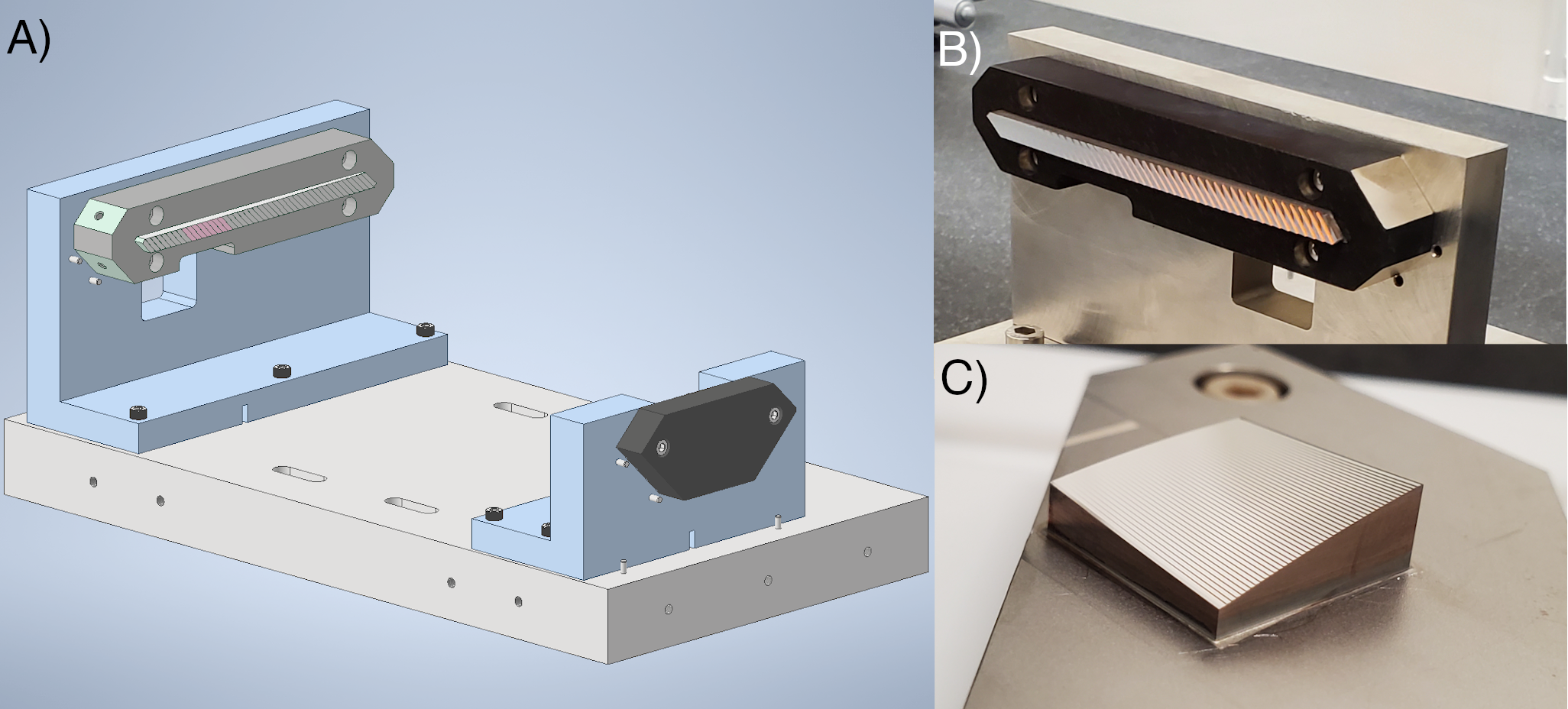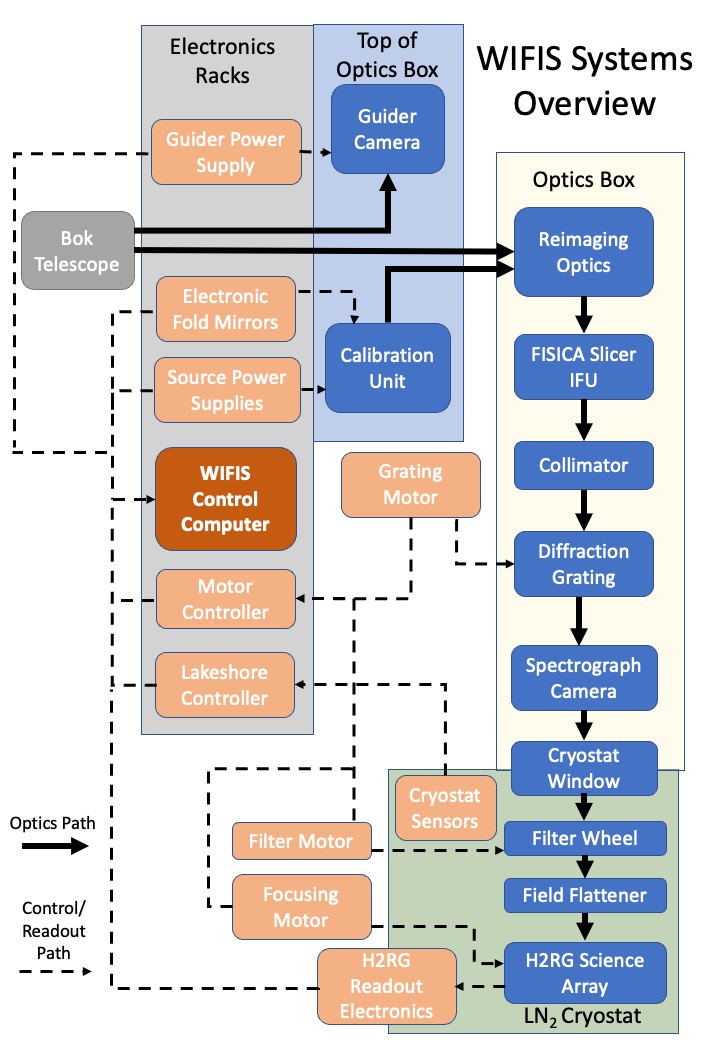Extremely Large Telescope:
Planetary Camera and Spectrograph (ELT-PCS)
ELT-PCS will provide state-of-the-art, high contrast imaging and spectroscopic capabilities to the ELT for the purpose of characterizing Earth-like exoplanets in nearby planetary systems. Presently, ELT-PCS is in an R&D phase that intends to optimize the optical design so that the instrument can provide the extremely high contrasts required to directly image Earth-like exoplanets at small inner working angles.
For this R&D, my work focuses on conducting a trade study into the optimal IFU design for a high contrast exoplanet imager and spectrograph. A key research question is whether an image slicer IFU can provide equal or greater contrast than a lenslet-based IFU, the latter which is currently employed in existing high contrast instruments such as GPI and SPHERE. More specifically, my work involves the design, manufacturing, and in-laboratory characterization of a novel, “twisted” image slicer IFU.
In collaboration with Canon Inc., we designed a uniquiely high quality image slicer IFU. Using state-of-the-art diamond turning manufacturing techniques, Canon Inc. is able to produce extremely small freeform mirrors with exceptionally low surface roughness. The IFU splits an image into 45 individual slices, then, in combination with partnered pupil mirrors, rearranges the slice images into a line so they can be dispersed spectrally by the spectrograph. You can see a 3D CAD model of the IFU and closeup images of the image slicer mirrors and their corresponding pupil mirrors.

The Wide Integral Field Infrared Spectrograph (WIFIS)

WIFIS is a slicer-based integral field spectrograph that operates primarily in the zJ-band (0.9-1.25 microns). The main feature of WIFIS is its uniquely wide, 20" x 50" field-of-view when mounted on the 90 inch Bok telescope at the Steward Observatory in Arizona. This field-of-view provides an unrivaled light gathering power (etendue) compared to similar instruments. WIFIS is also able to observe in the H-band (1.5-1.8 microns); however, observations at these wavelengths are significantly hindered by thermal noise from the instrument. The full CAD model of WIFIS can be seen below and a full description of the instrument can be found in the SPIE proceedings referenced in my publications. For reference, the height of the instrument is approximately 1.5 metres.
A significant part of my PhD research focused on the development of WIFIS, its subsystems, and software design. In addition to the overall instrument development, my major contribution to WIFIS was the optomechanical design and development of the Calibration Unit and Guider Camera subsystems. The Calibration Unit provides the instrument with light illumination for flat fielding and wavelength calibration, while the Guider Camera enables real-time, fine (< 1 arcsecond) telescope pointing corrections, astrometric pointing, and supplementary optical imaging in five filters (Sloan g, r, i, z, and H-alpha). In addition, I designed a fully integrated observing and control software GUI that enables a high 90-95% observing efficiency.
Currently, I support WIFIS as part of the instrument team as it is prepared for release for use by a wider astronomical community.
InfraRed Imaging Spectrograph (IRIS) for TMT
Prior to my work on WIFIS, I assisted in a trade study of diffractive gratings for the upcoming IRIS instrument for the Thirty Metre Telescope. The IRIS development team was determining whether standard, blazed reflective gratings or a new type of transparent grating called a Volume Phase Holographic grating were the best option for the instrument. Our study culminated in two SPIE papers and the decision to use reflective gratings due to their reasonable grating efficiencies and their tolerance to a wider range of incident angles.
Near-Infrared Optical SETI (NIROSETI)
NIROSETI is a highly specialized astronomical instrument that was designed to detect strong, and extremely rapid (nanosecond scale) near-infrared laser pulses. Its primarily purpose was to conduct a SETI (Search for Extra-Terrestrial Intelligence) program since no known astrophysical objects are known to produce these types of signals. My involvement included the selection of the detector type and manufacturer, as well as the initial instrumental testing and design. We selected a state-of-the-art near-infrared avalanche photodiode from Amplification Technologies as the primary detector for the instrument.
